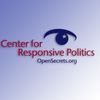New Hampshire's Maggie Hassan was the Democratic party's biggest investment in Congress. It paid off -- she defeated incumbent GOP Sen. Kelly Ayotte.
While super PACs and other outside groups went on a jaw-dropping spending spree this year, traditional party organizations played key roles in boosting their candidates, often taking the lead in making independent expenditures in the cycle's barnburner races.
Together, the Democratic National Committee and Republican National Committee raised a combined $1.7 billion through Oct. 19, the last date covered by Federal Election Commission reports due before the election -- but they went in opposite directions.
The Democratic party boosted its spending to $922.9 million through mid-October, a $108.6 million increase from its outlays at the same point in 2012. Republican party groups, on the other hand, managed to win the presidency and maintain the majority in the both houses of Congress by investing just $665.7 million this cycle -- a drop of nearly $112 million from their spending through mid-October four years ago.
Each party's spending topped $1 billion by the end of 2012; it's likely the Dems will get there this time around, but the Republicans may well fall short of that level.As party-backed -- but not officially party-affiliated -- super PACs such as Senate Leadership Fund and Senate Majority PAC have become financial powerhouses, traditional party groups have also turned to independent expenditures as their main mechanism for assisting candidates.
During the 2012 election cycle, Democratic party groups gave a total of $1.2 million to 359 House candidates, but halted at a mere $554,370 to 174 candidates this year. Democratic Senate candidates received $702,891 donations from party committees in 2012 but only $603,280 this year. Similarly, Republican party groups had contributed a total of $1.8 million to House and Senate candidates in 2012, but only about $827,000 this year.
Instead, the Democratic Congressional Campaign Committee and Democratic Senatorial Campaign Committee spent about $136 million together independently of their candidates this election, which tops the $94.2 million and the $113.3 million the party committees had spent by the end of 2014 and 2012 respectively. The National Republican Congressional Committee and National Republican Senatorial Committee made $112.4 million in independent outlays this cycle, continuing the march upward from $105 million in 2014 and $96.7 million in 2012.
The Democratic party's biggest investment this election cycle, the New Hampshire Senate race where the DSCC spent $12 million, finally paid off after all the votes were counted hours after the polls closed; Democratic challenger Maggie Hassan beat GOP incumbent Kelly Ayotte by only 716 votes. In the Pennsylvania Senate race, Democratic candidate Katie McGinty failed to turn the seat blue, losing to incumbent Republican Pat Toomey even when backed by the party committee with $11.7 million. The Pennsylvania and New Hampshire Senate contests were two of the most expensive congressional races ever, with campaigns and outside groups spending a total of $164 million and $121 million each.
On top of the NRSC's futile $6.8 million effort in the New Hampshire Senate race, it spent $7.5 million trying, unsuccessfully, to snare retiring Senate Majority Leader Harry Reid's Nevada seat . That one went to Democratic candidate Catherine Cortez Masto, who defeated Rep. Joe Heck.
In the lower chamber, the DCCC spent $4.8 million trying to get Steve Santarsiero elected in Pennsylvania's 8th Congressional District, but Santarsiero lost. The competition to fill Republican Rep. Michael Fitzpatrick's seat became the third most expensive House race this year, counting both campaign and outside spending.
The race that was the NRCC's biggest target this year didn't work out well, either, as incumbent Crescent Harty failed to secure his Nevada's 4th congressional seat from Democratic challenger Ruben Kihuen despite the party committee's $5.9 million support.
In the presidential race, the independent spending of party groups was almost invisible compared with the role it played in the match between President Barack Obama and his Republican counterpart Mitt Romney four years ago.
In 2012, Republican party groups led by the Republican National Committee spent nearly $66 million, in both coordinated and independent ads attacking Obama and supporting Romney. By mid-October his year, only about $379,000 had been spent against Clinton and for Trump.
Although to a lesser degree than the Republican party groups, Democratic party groups also halted at spending a modest $7 million in independent expenditures during this presidential election, compared to the $21 million spent in coordination with Obama during the last presidential election.
